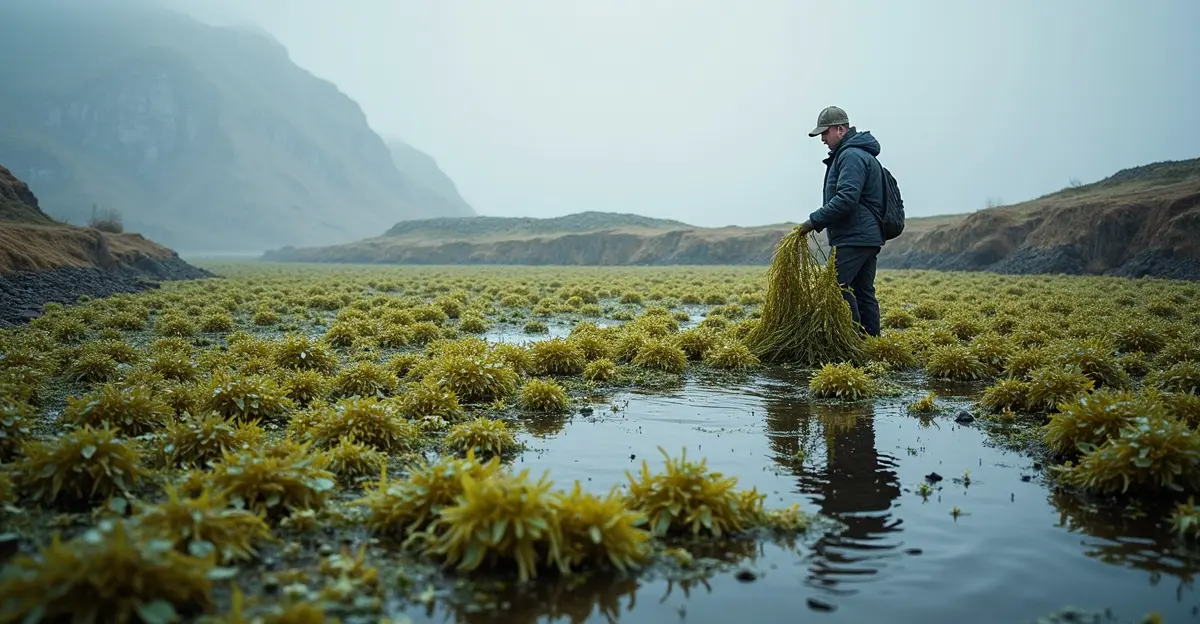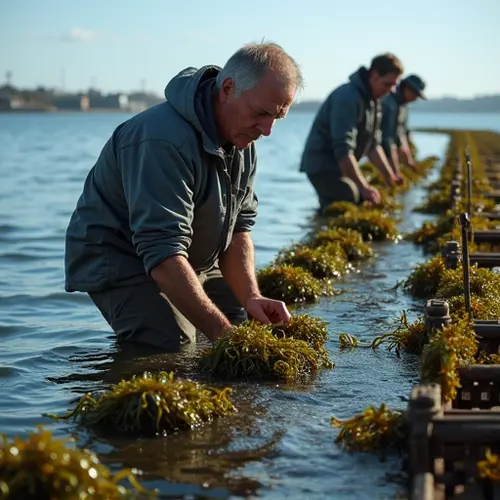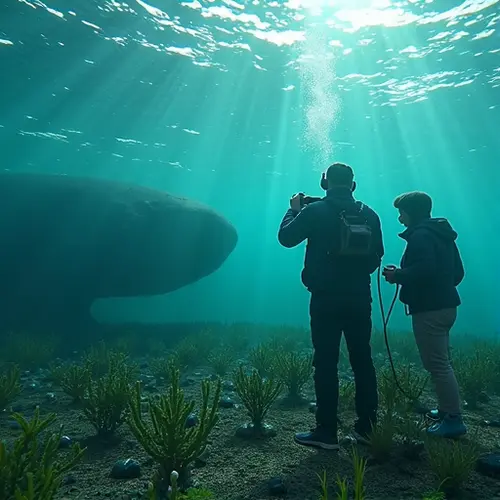Scandinavian pilot projects demonstrate seaweed farming's potential to absorb CO2 and cool coastal waters. Recent research confirms significant carbon sequestration rates, with global expansion possibly removing 140 million tons of CO2 annually by 2050.

Seaweed Farming Emerges as Powerful Climate Tool
In the fight against climate change, an ancient marine resource is gaining new prominence: seaweed. Recent pilot projects across Scandinavia are demonstrating that seaweed farming can significantly absorb carbon dioxide and even cool coastal waters, offering a promising nature-based solution to global warming. With countries like Norway and Sweden leading the charge, these initiatives are showing tangible results in carbon sequestration and local environmental benefits.
Scientific Breakthrough in Carbon Sequestration
A groundbreaking study published in Nature Climate Change has validated seaweed farming's potential as a blue carbon solution. The research, led by Oceans 2050's Global Seaweed Project, analyzed 20 farms across five continents and found that seaweed farms sequester carbon at rates comparable to mangroves and seagrasses. 'Our findings show that seaweed farming can remove an average of 1.87 tons of CO2 equivalent per hectare annually,' said Professor Carlos Duarte, chief scientist of the project. 'This is a game-changer for coastal communities and climate policy.'
The study revealed that older, larger farms perform even better, with some storing up to 140 tons of carbon per hectare. If expanded globally, seaweed farming could potentially remove up to 140 million tons of CO2 annually by 2050. This research provides the scientific foundation for creating carbon credit methodologies, potentially integrating seaweed farming into carbon markets.
Scandinavian Pilot Projects Leading the Way
In Norway, the JIP Seaweed Carbon Solutions project has established a 200-decare offshore seaweed farm off the coast of Trøndelag. With a budget of NOK 50 million and partners including SINTEF, DNV, and Equinor, this three-year pilot aims to test large-scale kelp cultivation as a cost-effective carbon removal solution. 'We're exploring how to transform seaweed into biochar for permanent CO2 removal,' explained a project spokesperson. The first seedlings deployed in November 2023 are expected to yield approximately 150 tons of biomass by summer 2024, potentially capturing 15 tons of CO2.
Meanwhile, Sweden's KOASTAL initiative is pioneering a franchise model for sustainable sugar kelp cultivation on the west coast. Founded by Samuel Amant, the company helps small-scale players, particularly fishers, overcome entry barriers by providing comprehensive support. 'Our model allows fishers to diversify their income during winter using existing infrastructure,' Amant noted. Currently operating 6 farms with 10 permits, KOASTAL's approach ensures reliable seaweed supply while supporting local economies.
Cooling Coastal Waters: An Added Benefit
Beyond carbon sequestration, seaweed farming shows promise in cooling coastal waters. As seaweed grows, it absorbs heat and provides shade, potentially reducing local water temperatures. This cooling effect can help mitigate the impacts of marine heatwaves, which are becoming more frequent due to climate change. While research is ongoing, early observations suggest that seaweed farms can create microclimates that benefit marine ecosystems.
The nutrient uptake by seaweed also improves water quality by reducing eutrophication. 'Seaweed acts as a natural bio-filter, cleaning the water while capturing carbon,' said marine biologist Dr. Lena Bergström. This dual benefit makes seaweed farming particularly attractive for regions experiencing coastal warming and pollution.
Economic and Social Impacts
Seaweed farming offers significant economic opportunities, especially for coastal communities. The industry supports food security, creates jobs, and promotes gender equity—over 99% of participants in global seaweed farming are women from developing countries. In Scandinavia, projects like Sjøgård in Norway are creating sustainable business models that align with multiple UN Sustainable Development Goals.
However, challenges remain. Production costs, seasonality, and regulatory hurdles need addressing. 'We need supportive policies and market development for value-added seaweed products,' emphasized industry expert Maria Larsen. Despite these challenges, the potential for scaling up is substantial, with the global seaweed market valued at $16.5 billion in 2023 and strong growth projected.
Future Outlook and Global Potential
As climate urgency increases, seaweed farming is gaining recognition as a scalable solution. The European Union and organizations like WWF are supporting research and development. With continued innovation and investment, seaweed farming could become a cornerstone of the blue economy, combining climate action with sustainable development.
The success of Scandinavian pilots provides a blueprint for other regions. 'What we're learning here can be applied globally,' said climate scientist Dr. Erik Johansen. 'Seaweed farming represents a practical, nature-based approach to addressing multiple environmental challenges simultaneously.'

 Nederlands
Nederlands
 English
English
 Deutsch
Deutsch
 Français
Français
 Español
Español
 Português
Português









